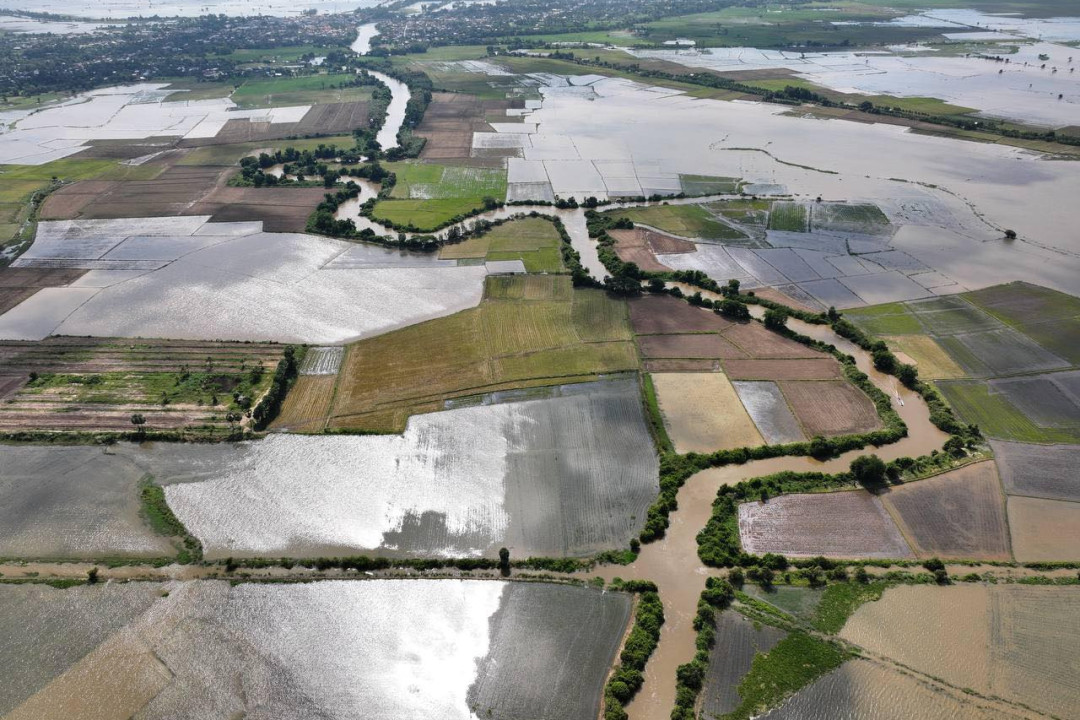Funan Techo Canal is Good to Go; Cambodia-China Direct Railway Under Discussion

Chinese President Xi Jinping’s visit to Cambodia from April 17-18, 2025, as part of his larger Southeast Asia tour with Vietnam and Malaysia, culminated in the signing of 37 agreements between both countries. One of these agreements concerns the landmark USD 1.1 billion Funan Techo Canal, a major waterway infrastructure project that is expected to be vital to Cambodia’s aspirations to becoming a major logistics hub in the region.
During the Chinese president’s visit to the Peace Palace in Phnom Penh, no new loans were signed, but several cooperation agreements were established. These agreements encompass investment, trade, education, finance, media, youth affairs, agriculture, health, water resources, tourism, women’s affairs, and other areas of collaboration.
Most notably, Xi’s visit marked the signing of a USD 1.156 billion agreement for the construction of the Funan Techo Canal (FTC) project, which has a projected total cost of USD 1.7 billion. The agreement was signed by Deputy Prime Minister Sun Chanthol, First Vice Chairman of the Council for the Development of Cambodia (CDC), and Wang Tongzhou, Chairman of the China Communications Construction Company (CCCC).
Similar to previous projects with China, the canal will be developed under a Build-Operate-Transfer (BOT) model and will be managed by Funan Techo Coastal-Inland Waterways Company Ltd., a special-purpose company with joint ownership – 51 per cent held by Cambodian firms, and 49 per cent held by the China Road and Bridge Corporation. Cambodian shareholders include the Overseas Cambodian Investment Corporation (OCIC), Sihanoukville Autonomous Port (PAS), and the Phnom Penh Autonomous Port (PPAP).
The over 150-kilometer canal will stretch from the Bassac River in Phnom Penh to the coastal province of Kep, and will be able to handle vessels up to 3,000 deadweight tons (DWT).
According to a statement released by the FTC, the new inland waterway is expected to significantly contribute to Cambodia's economic independence and growth, creating up to 50,000 direct and indirect jobs, reducing logistics costs, shortening trade routes, expanding irrigation, boosting agricultural productivity, and expanding access to international markets.
The project also aims to stimulate tourism and industrial development, reduce reliance on foreign ports, and reinforce Cambodia’s role as a logistics hub in the ASEAN region and among signatories of the Regional Comprehensive Economic Partnership (RCEP).
Discussions Ongoing for Cambodia-China Direct Railway
Xi’s visit also ignited a glimmer of hope for a USD 4 billion high-speed railway project connecting Cambodia directly to China, according to a statement made to the press by the Chinese Ambassador to Cambodia, Wang Wenbin.
He stated that China is closely monitoring the development of Cambodia’s high-speed railway network and mentioned that a potential railway project connecting Cambodia to China is under discussion.
“I believe the Chinese side attaches great importance to railway cooperation, and we will actively promote it. We think that expanding railway collaboration will benefit both China and Cambodia, as well as enhance regional connectivity and improve the efficiency of transporting people and goods. As for which countries the railway from China to Cambodia will pass through, discussions are ongoing,” said Ambassador Wang.
Cambodia’s Medium and Long-Term Railway Development Plans
Cambodia’s infrastructure development plan (2023-2033) details a cost of at least USD 36 billion to modernise and upgrade the country’s infrastructure and logistics systems.
In April 2024, the Minister of Public Works and Transport, Peng Ponea, affirmed that several studies have already been conducted for the railway development process, and a strategic plan has been drafted across two phases – a medium-term plan from 2023 to 2027, and a long-term plan from 2028 to 2033.
The medium-term plan includes three railway development projects:
- Upgrade two existing railway lines (Phnom Penh-Sihanoukville and Phnom Penh-Poipet) to support higher-speed operations;
- Build a railway link connecting Phnom Penh to Techo International Airport;
- Build a railway link connecting Siem Reap International Airport to Siem Reap city.
The long-term plan from 2028 to 2033 includes five more railway projects, including high-speed railways between Phnom Penh and Sihanoukville; Phnom Penh and Poipet; and Phnom Penh and Bavet on the Vietnamese border. The route to Poipet will also pass through Kampong Thom and Siem Reap provinces.
Additionally, Cambodia plans to establish an urban railway system in Phnom Penh to accommodate the capital’s rapid growth in urban traffic.
China is Cambodia’s largest source of foreign direct investment (FDI) as well as its biggest creditor, with loans totaling USD 4 billion. As part of the Belt and Road Initiative (BRI), China helped to build the Sihanoukville Special Economic Zone (SEZ), which is a joint venture between Chinese and Cambodian companies, housing 175 factories from China, Europe, the United States, Southeast Asia, and other regions.